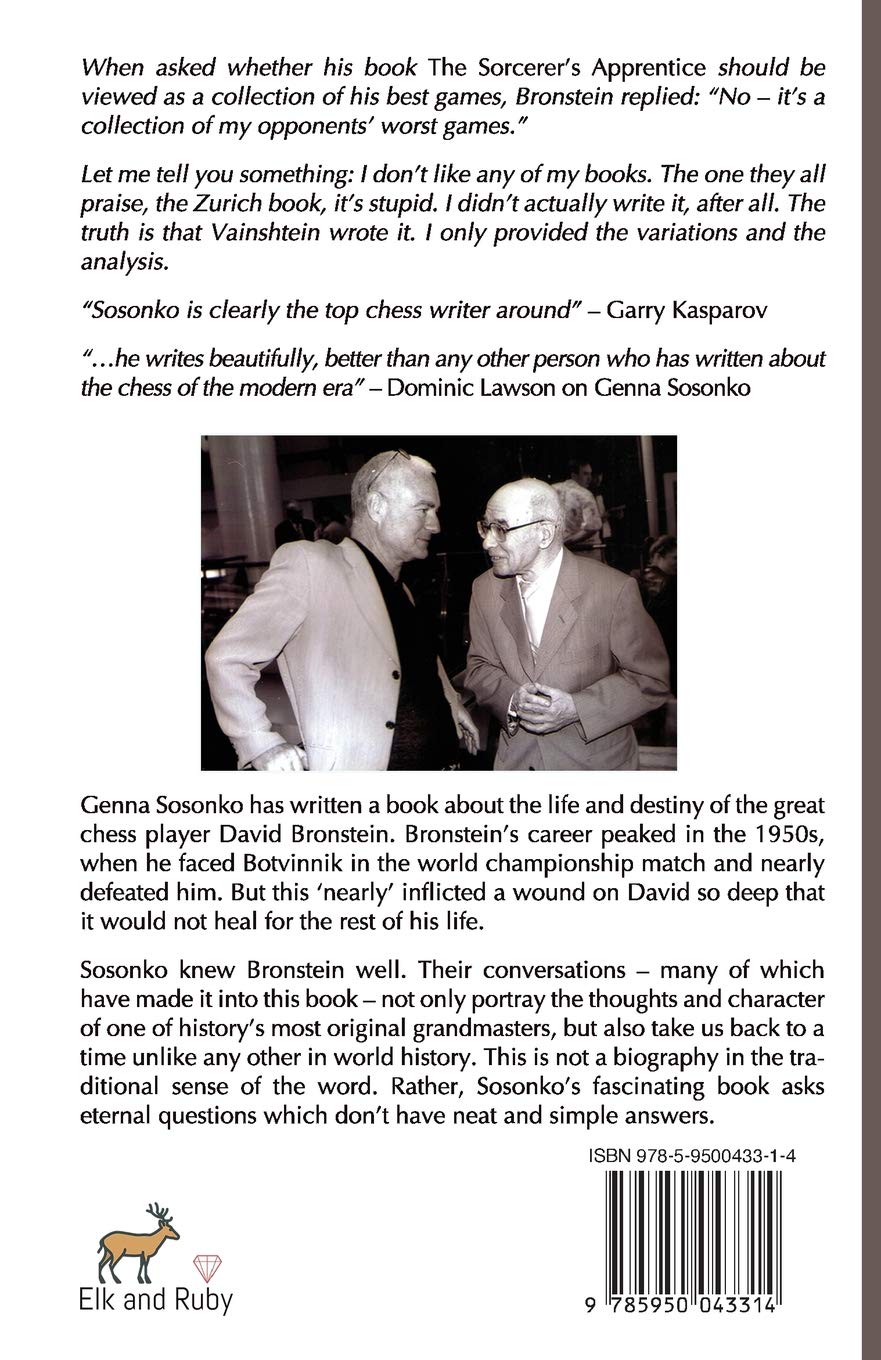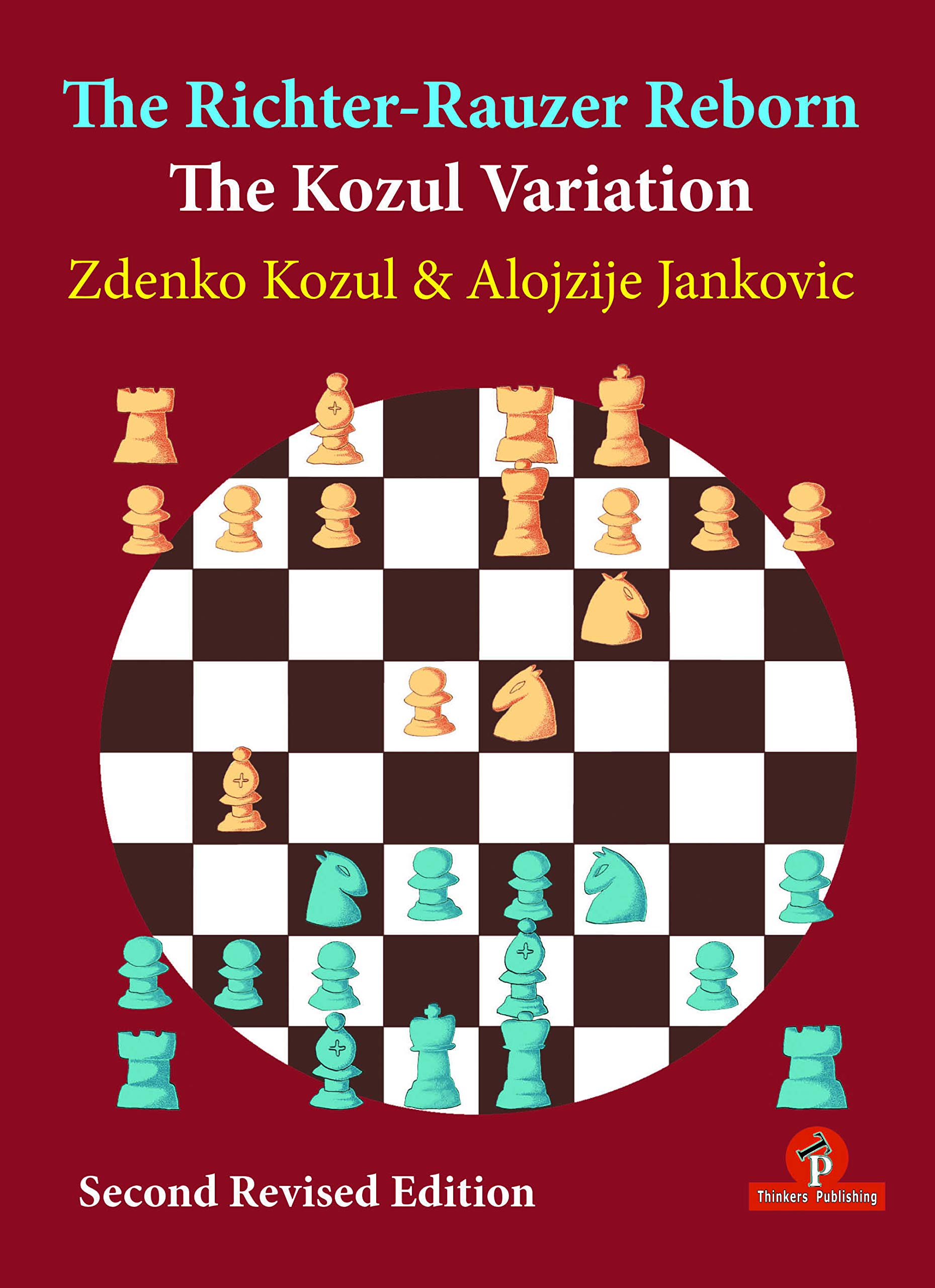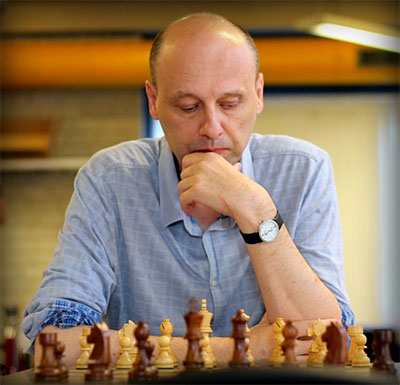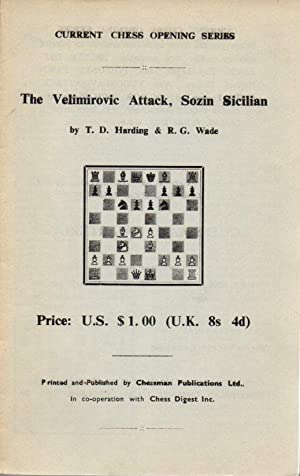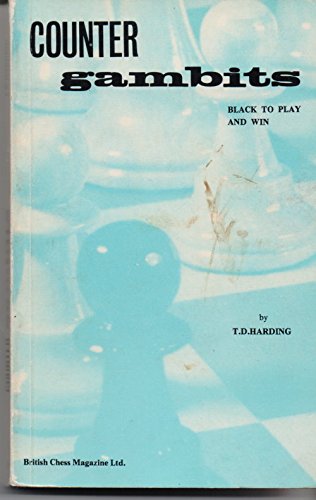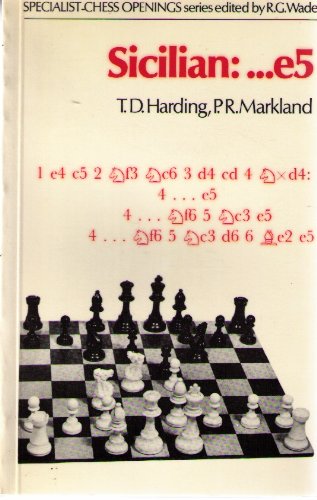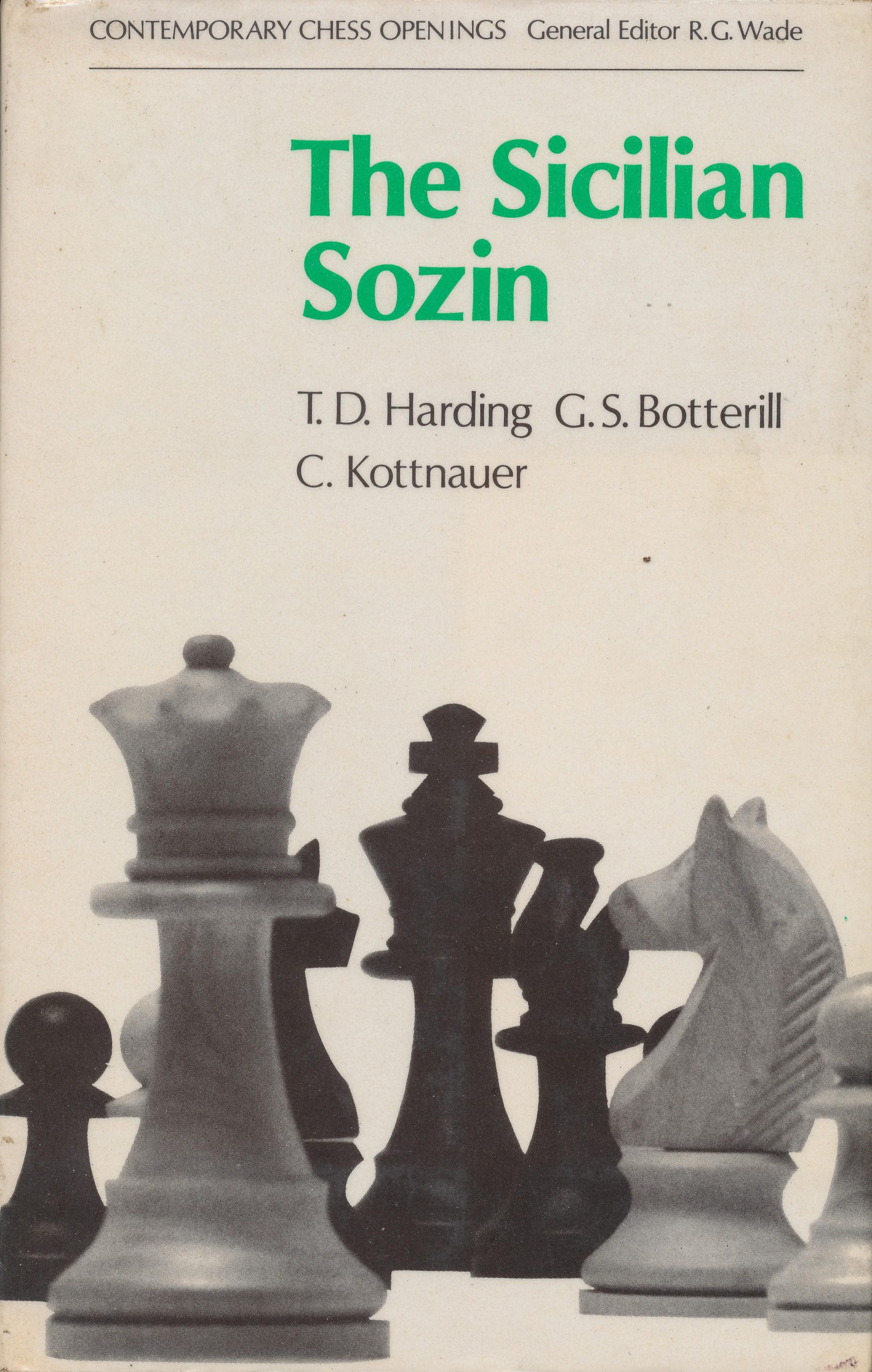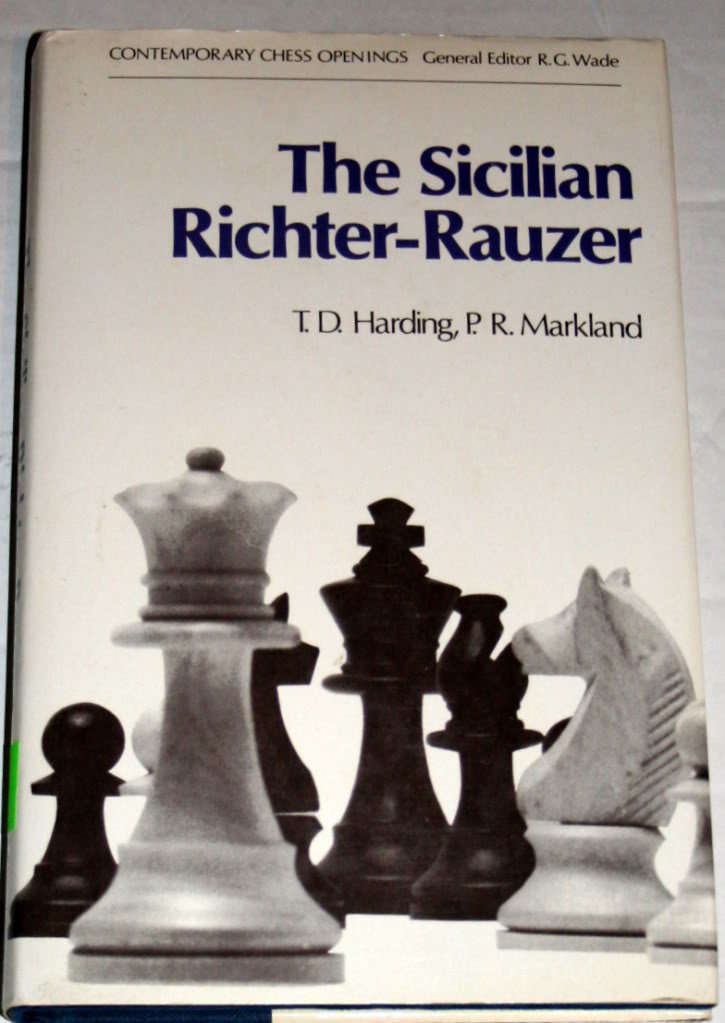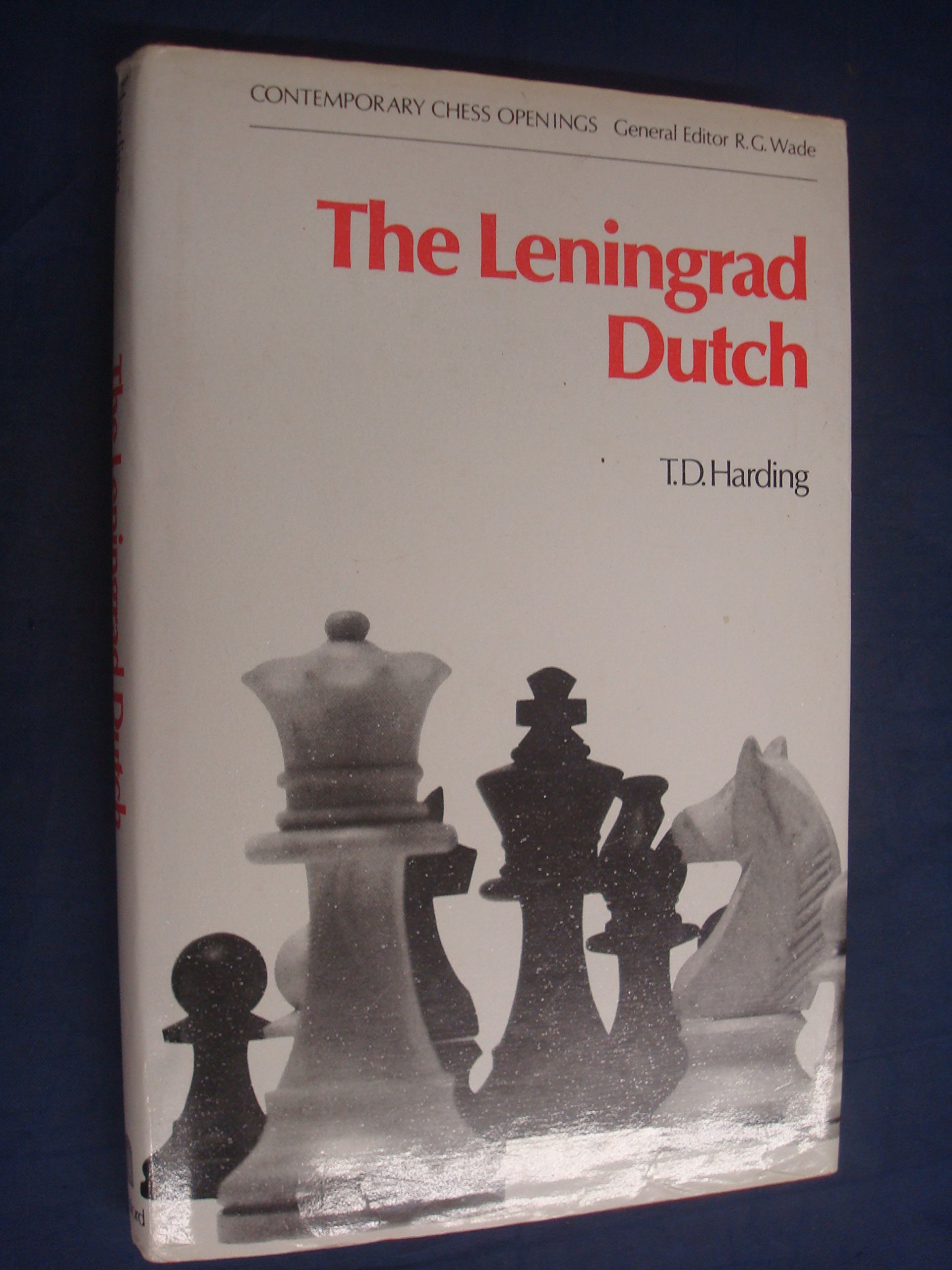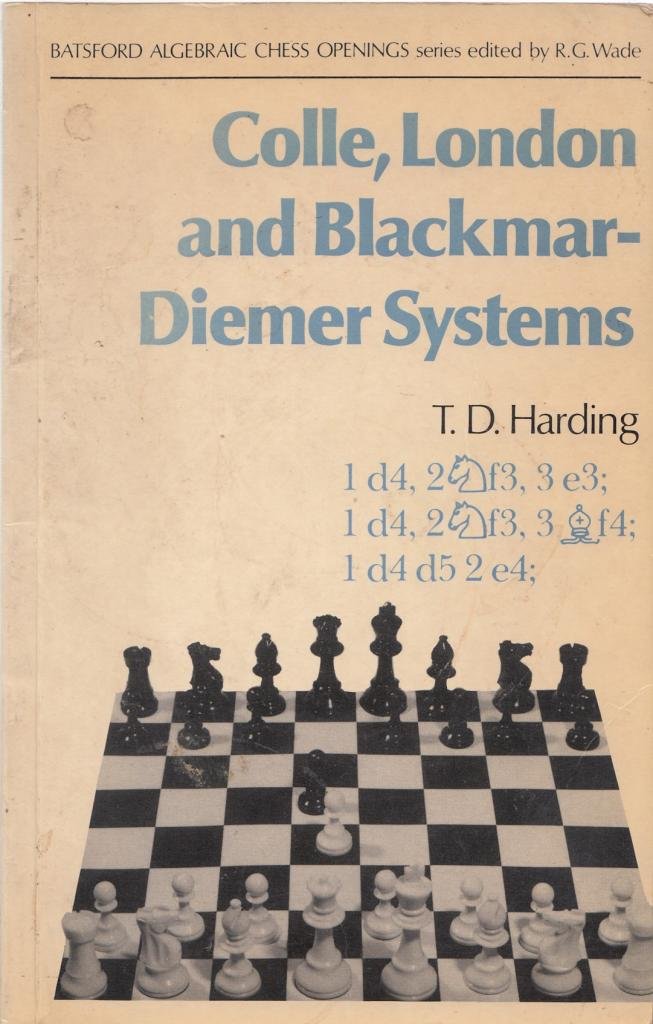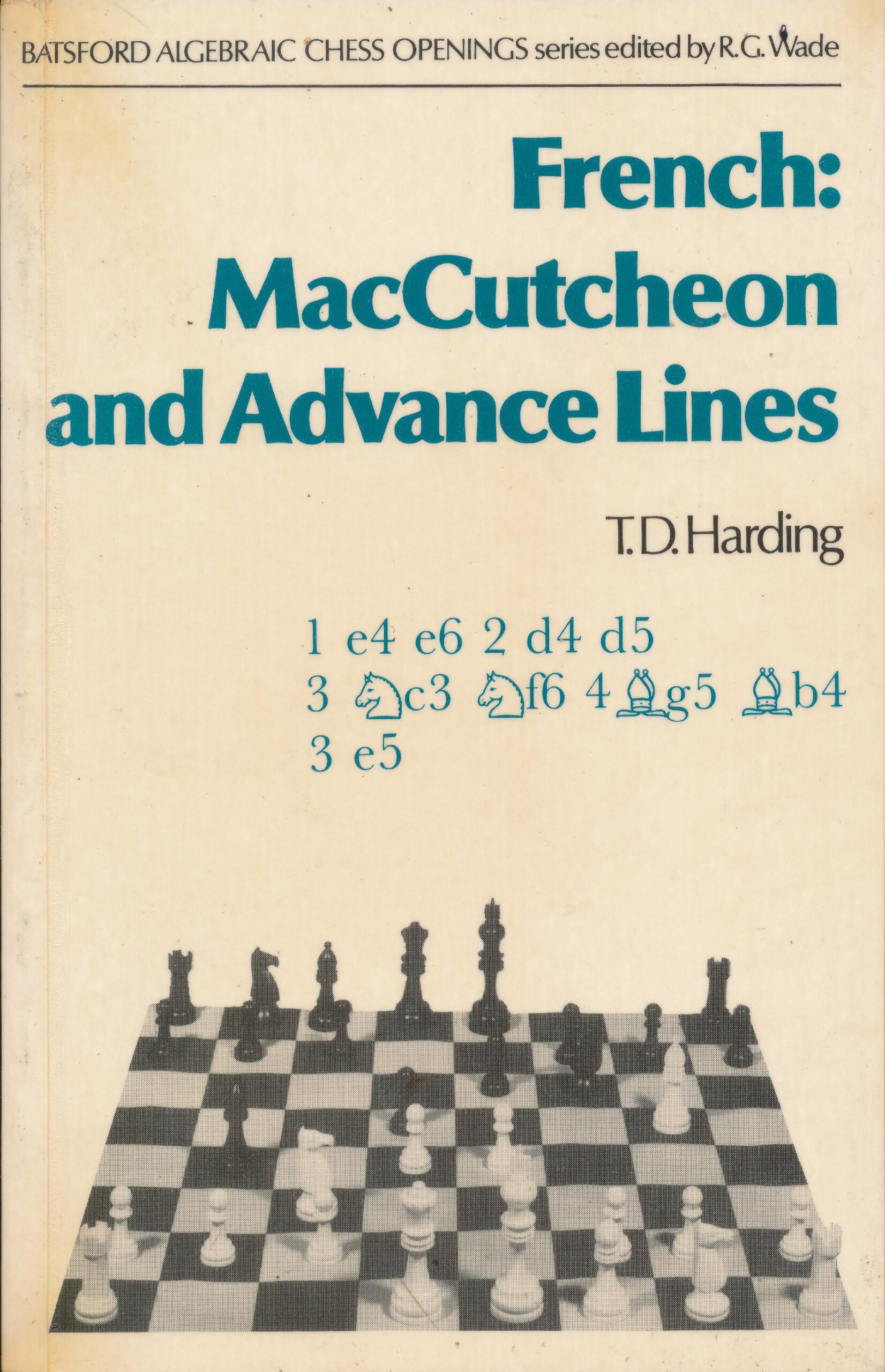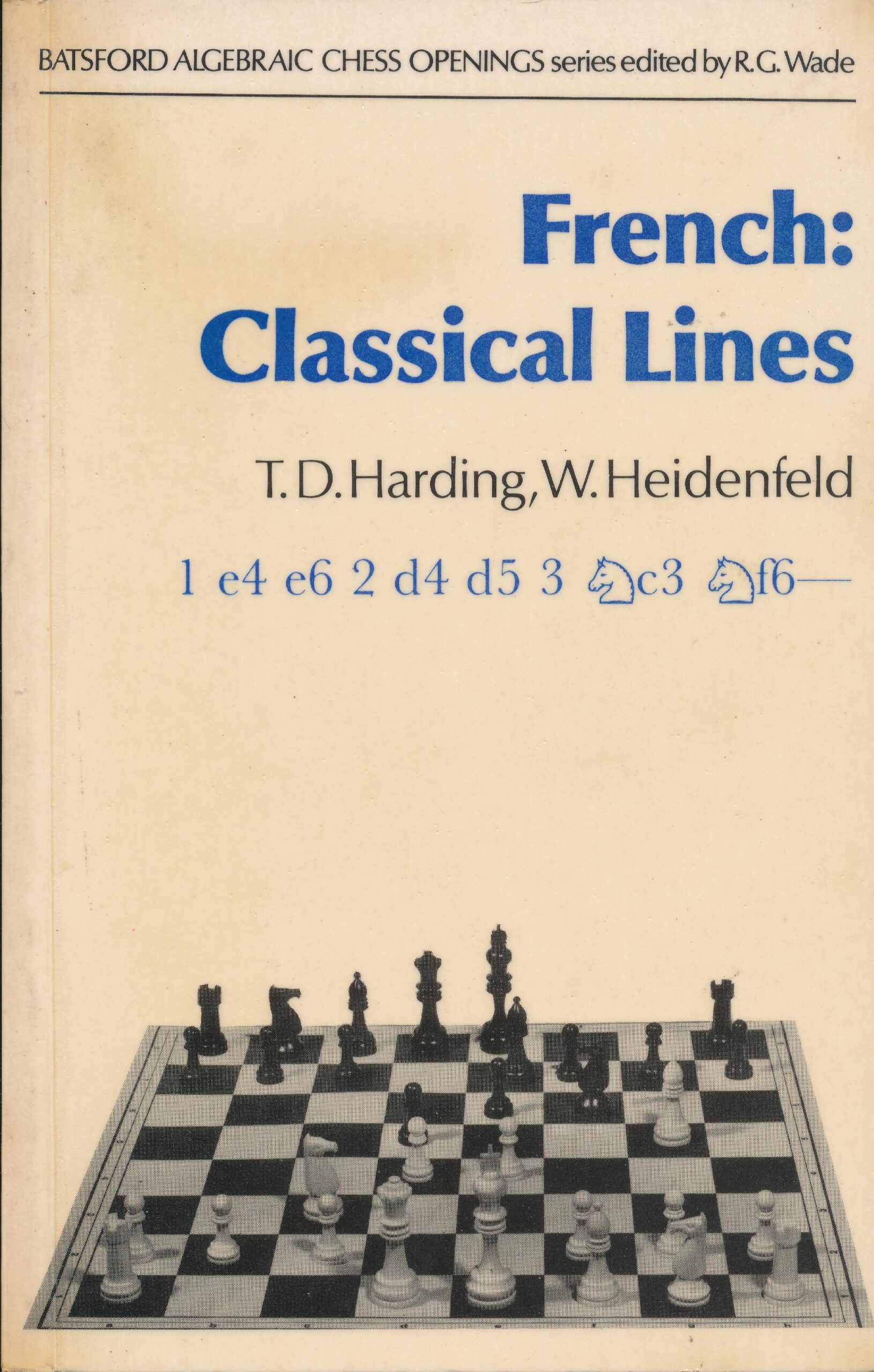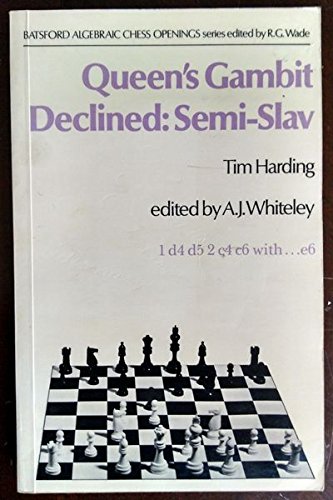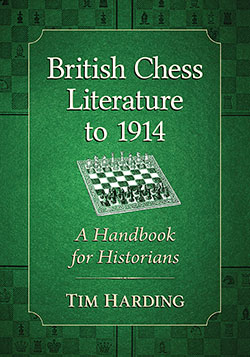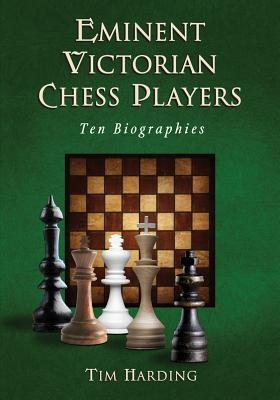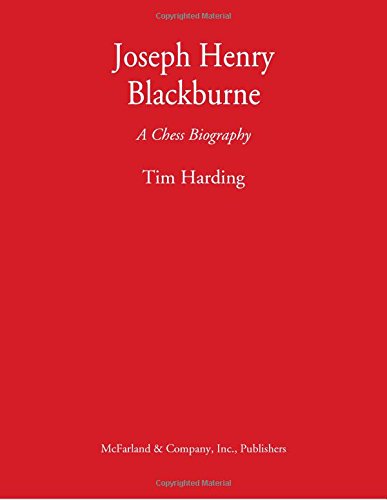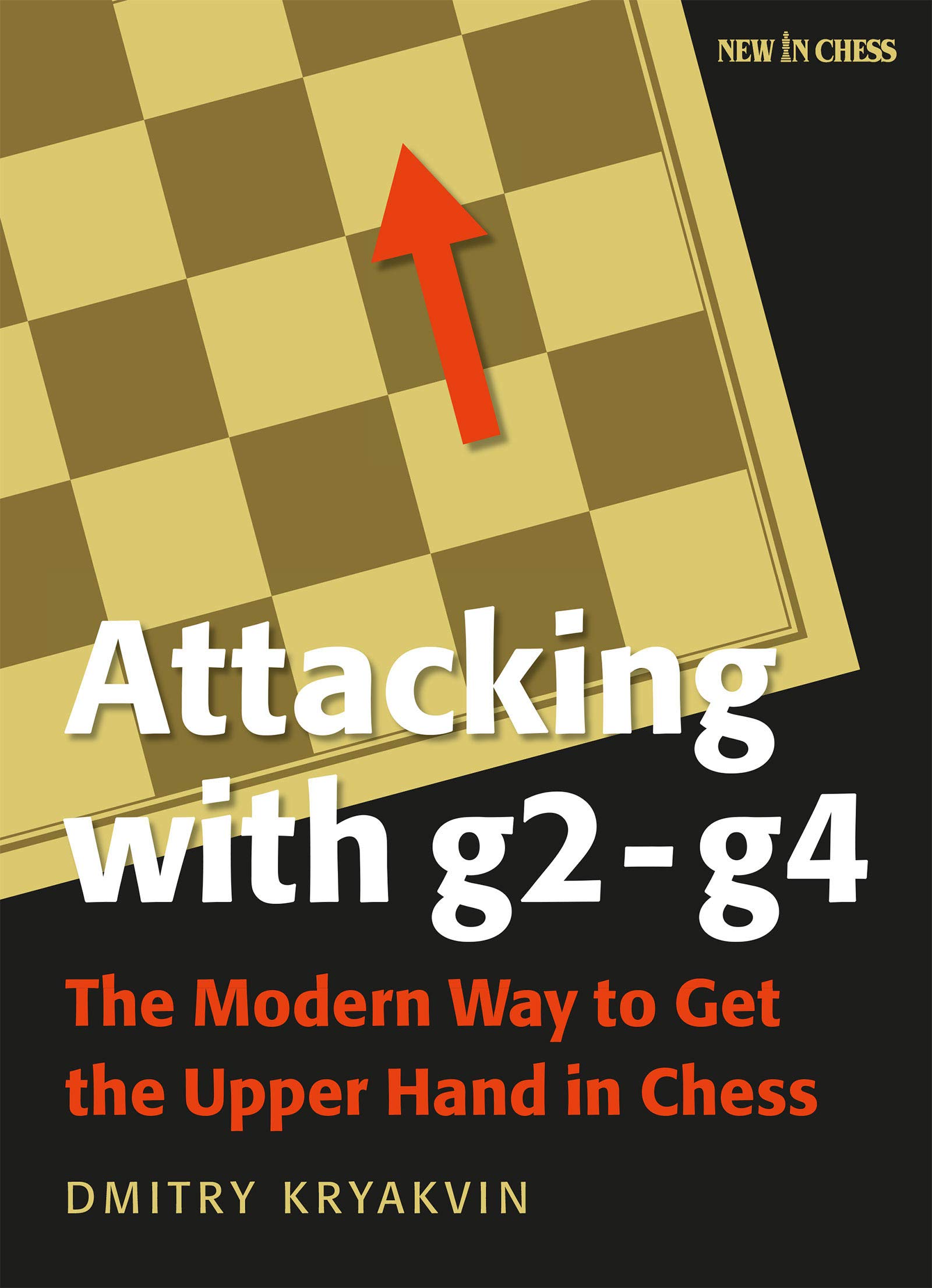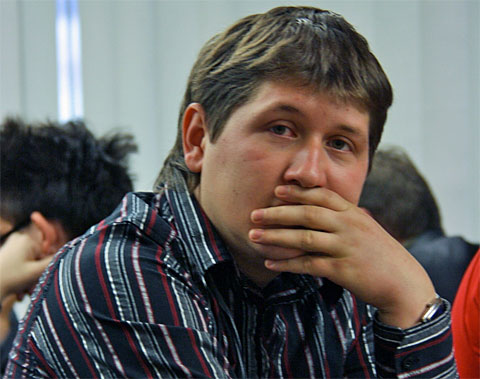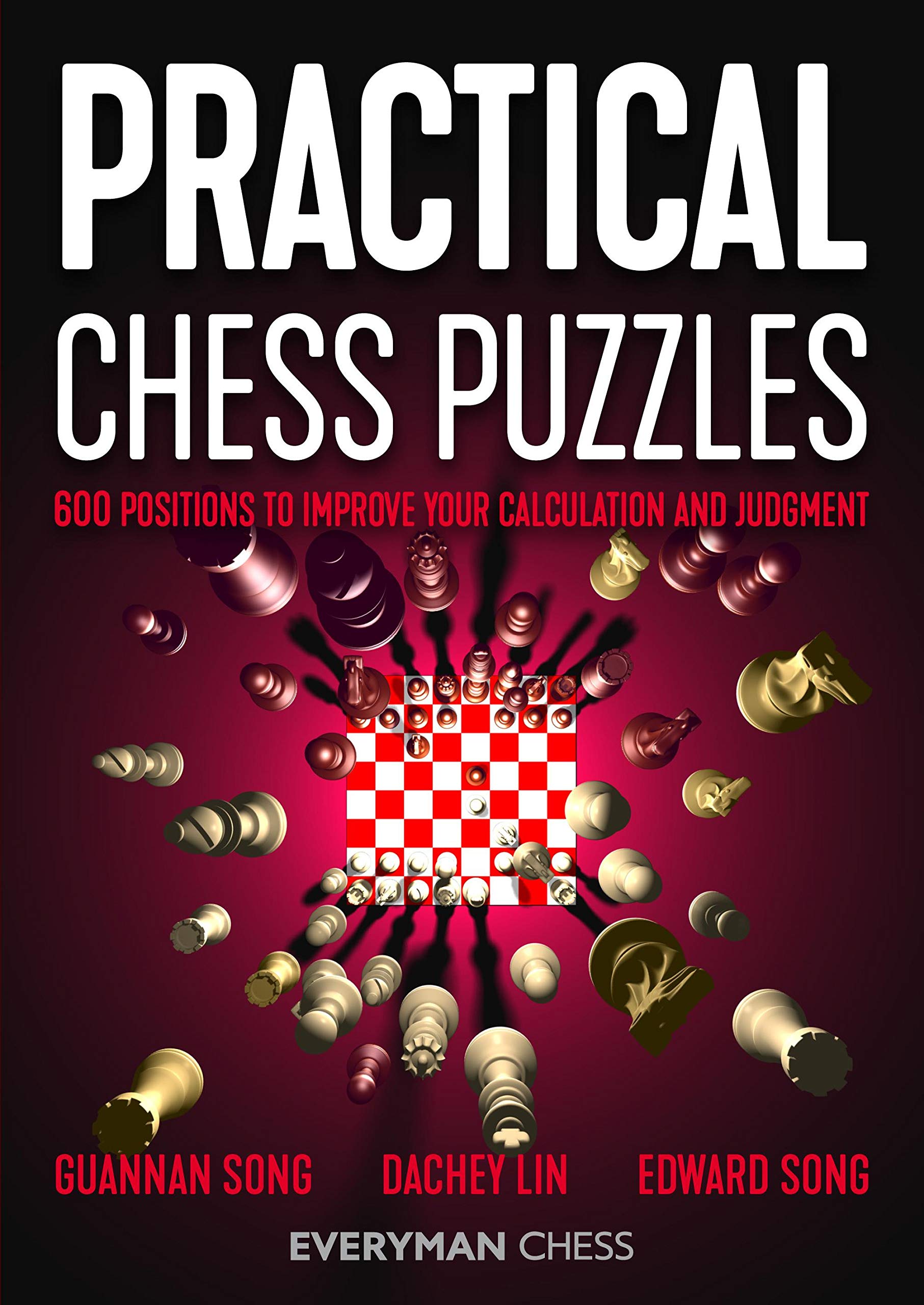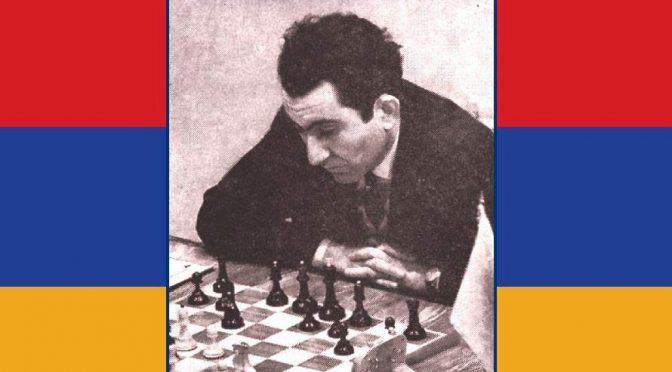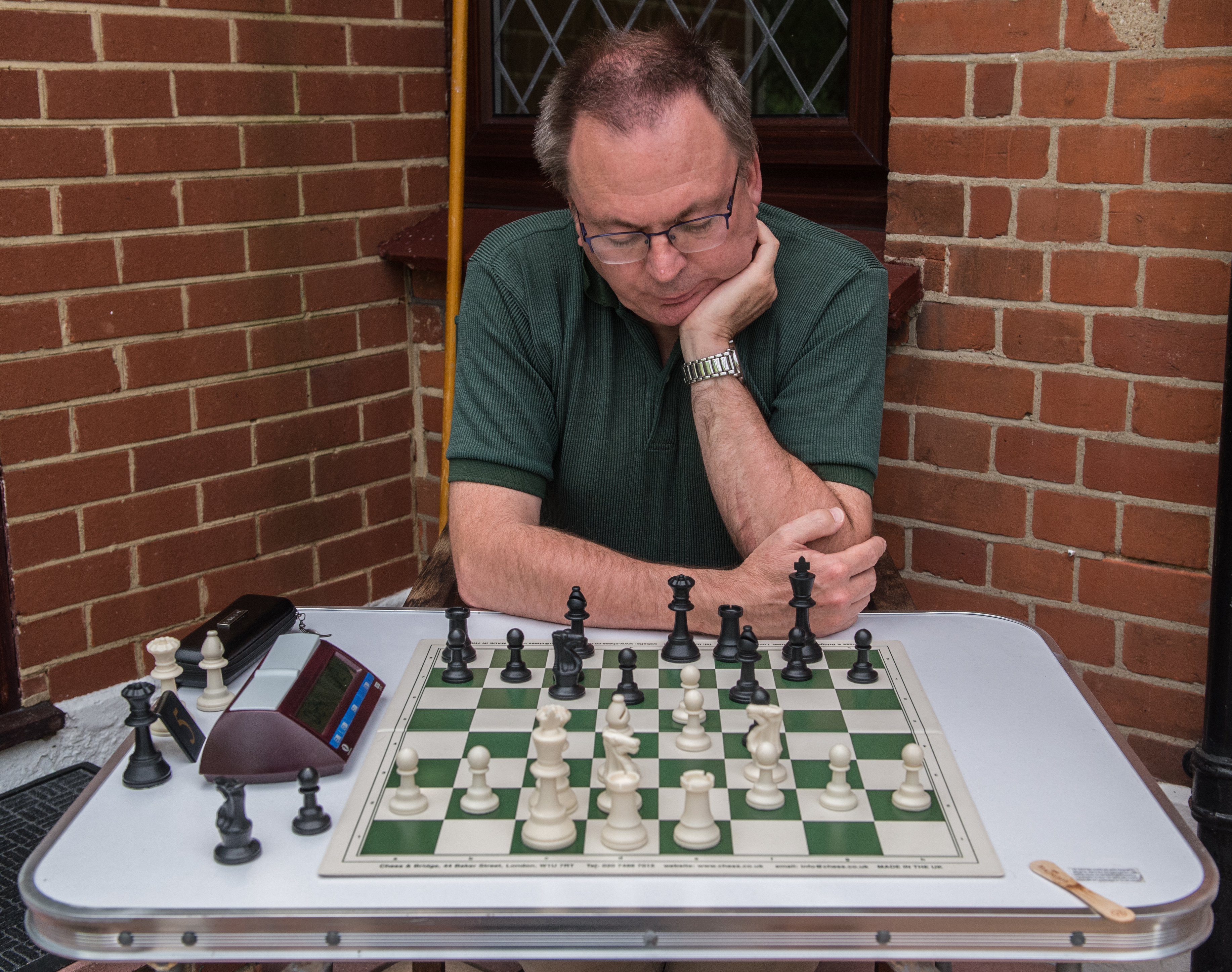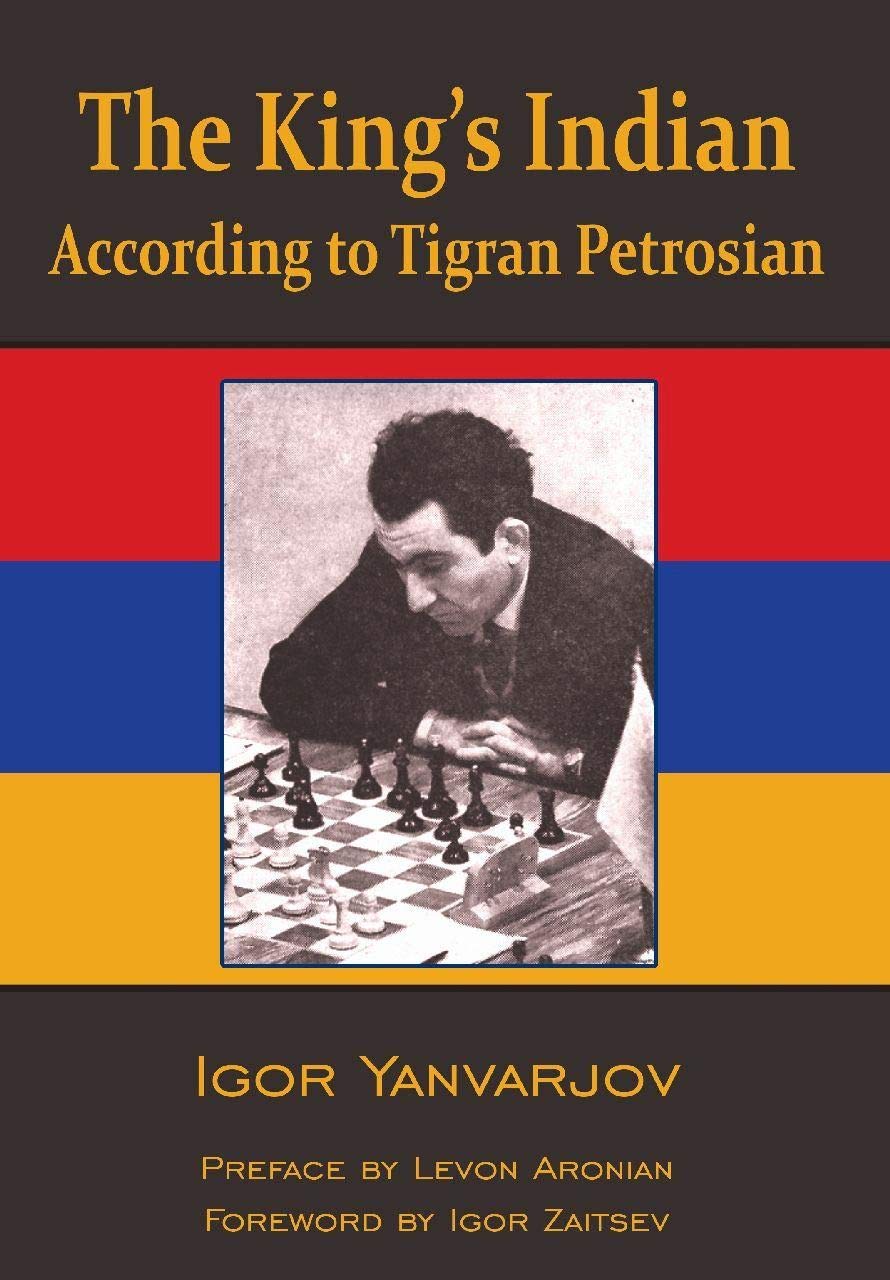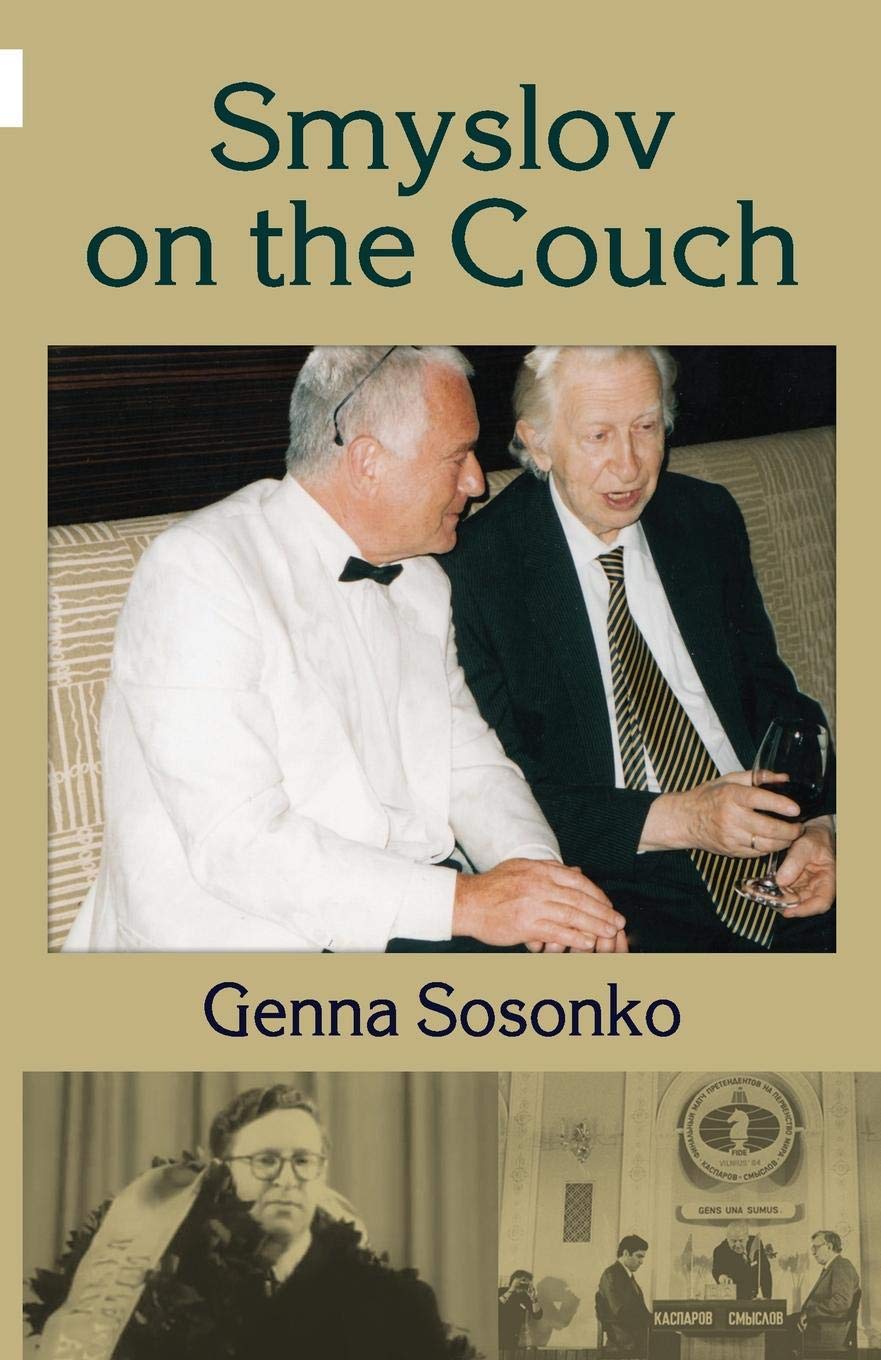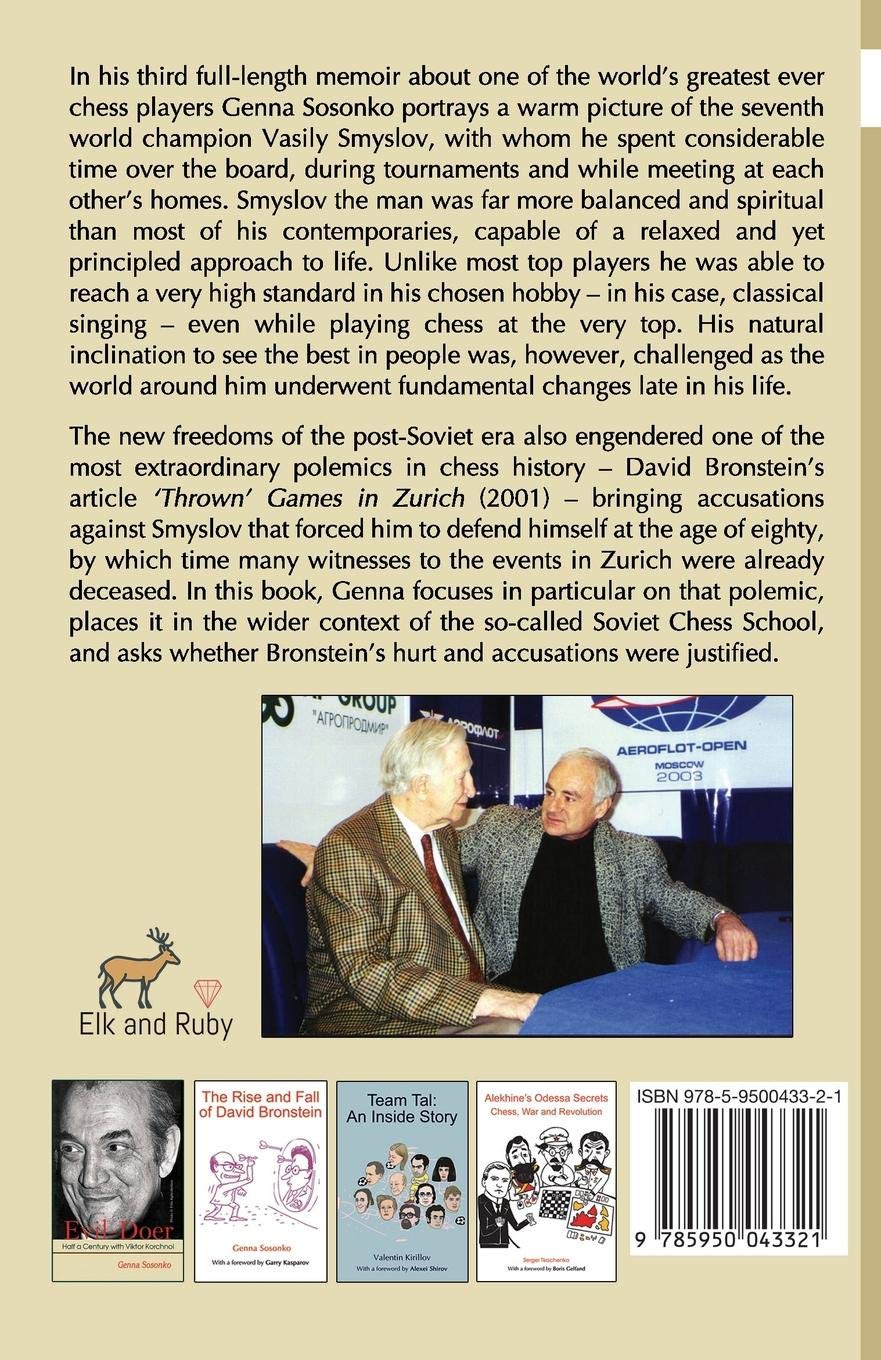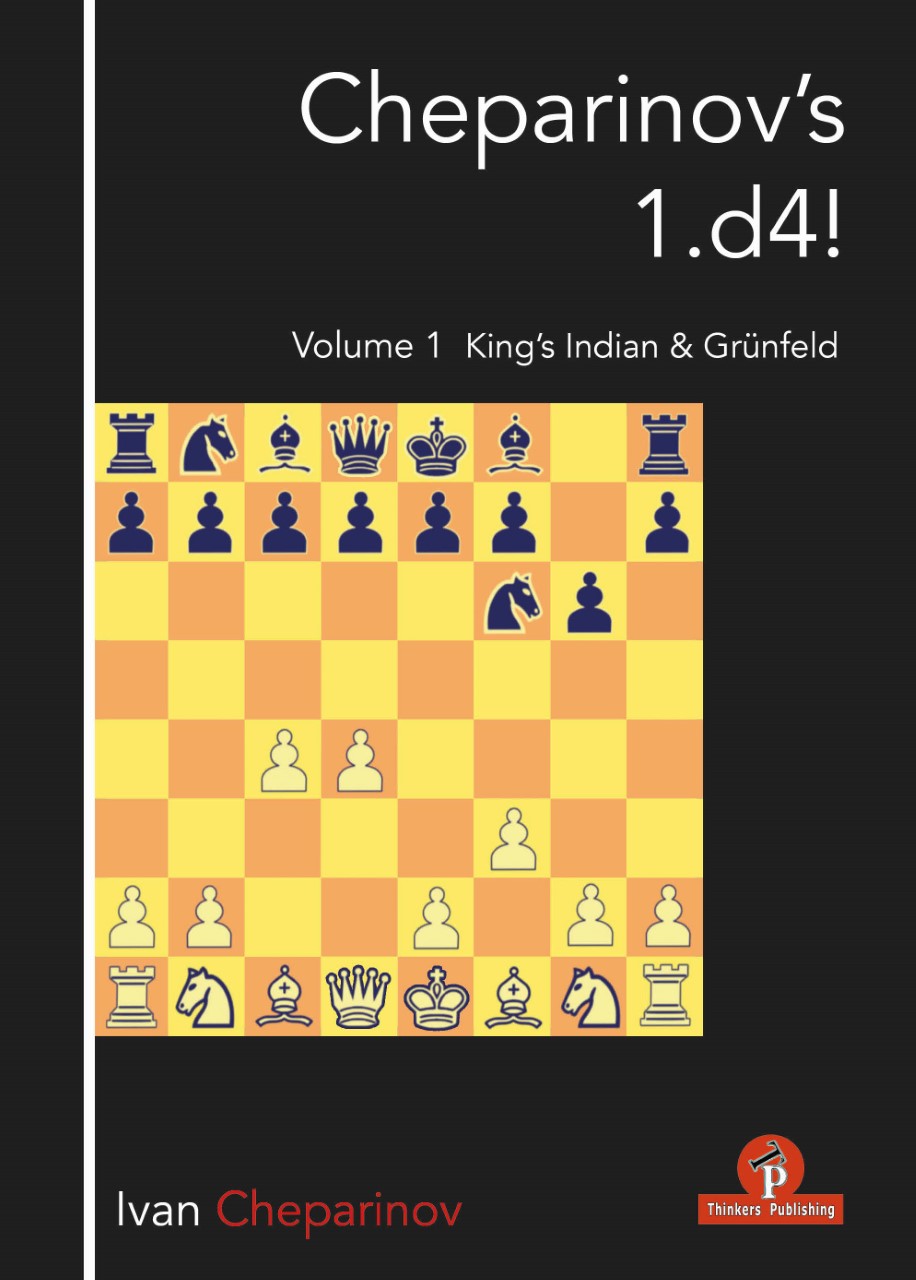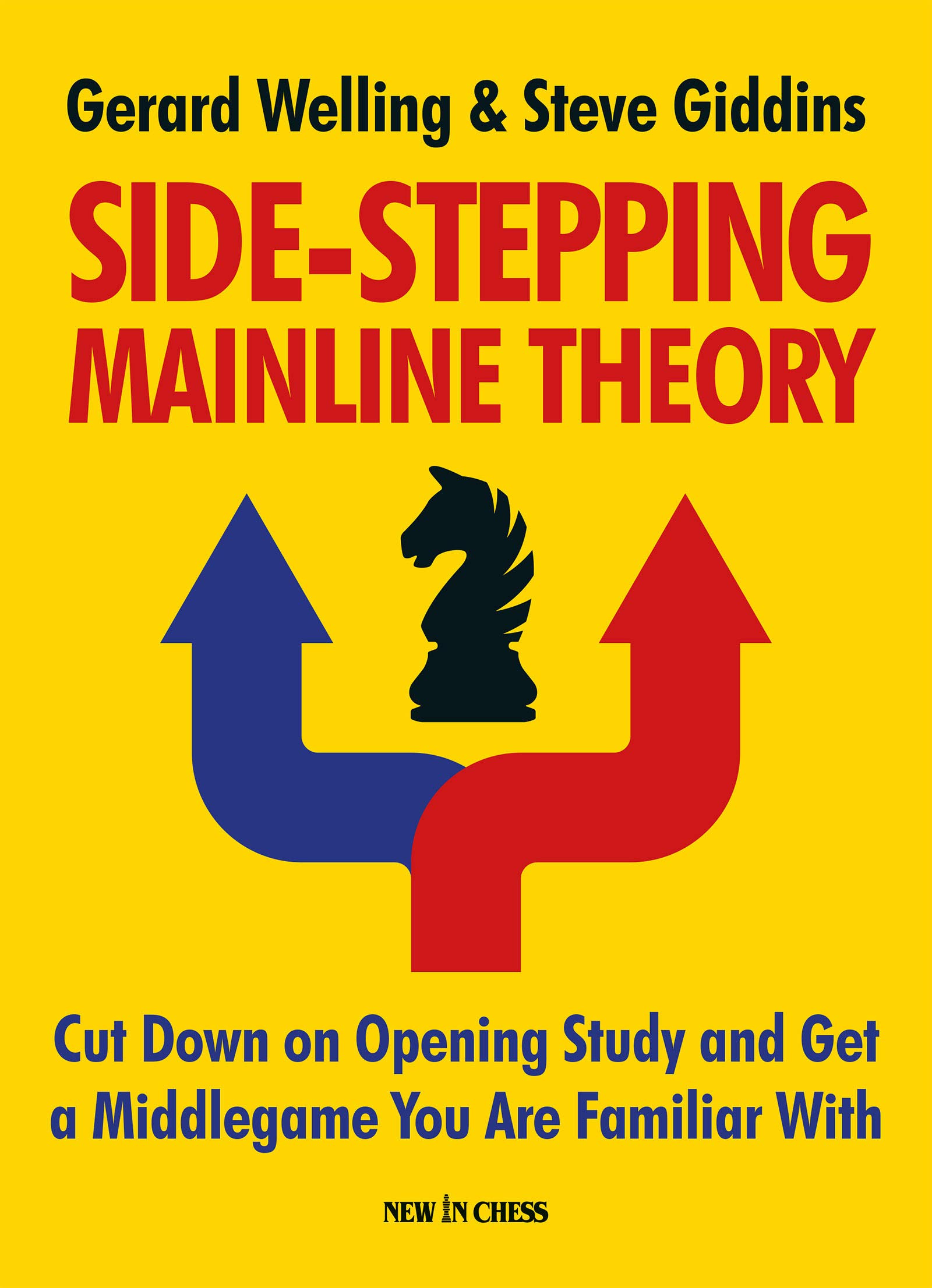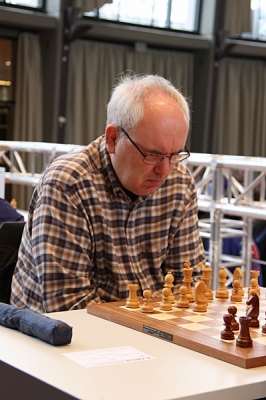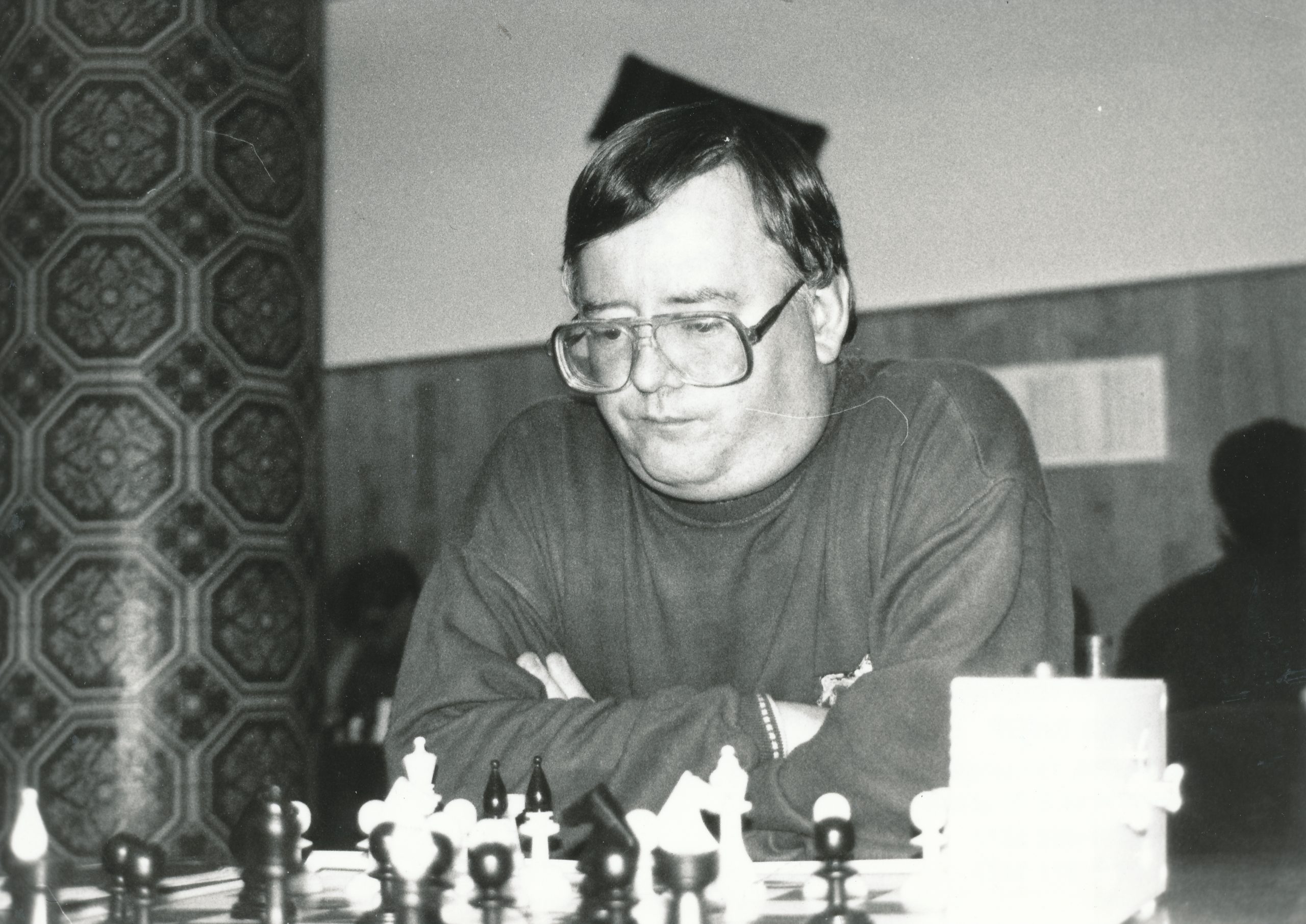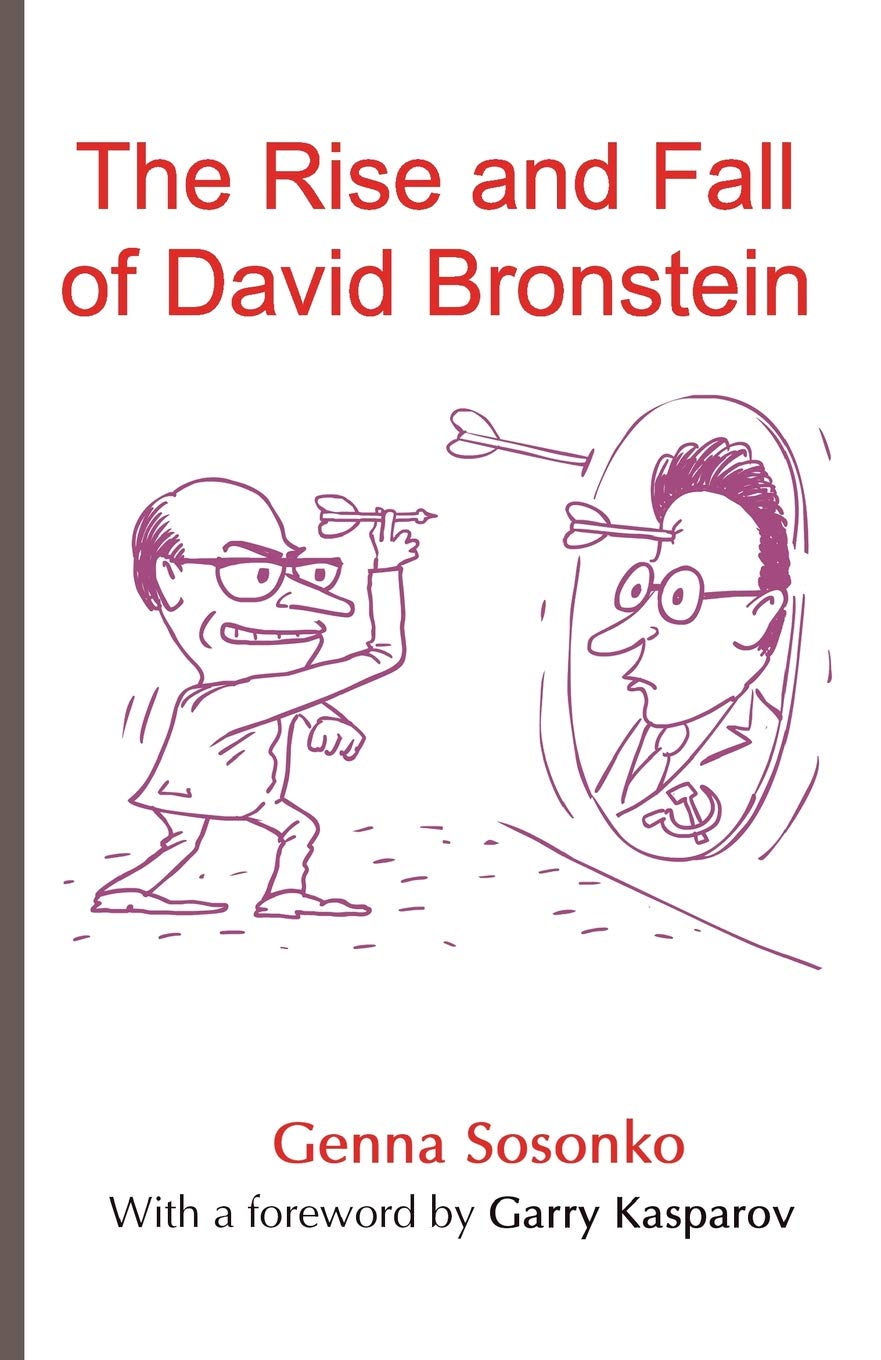
The Rise and Fall of David Bronstein : Genna Sosonko
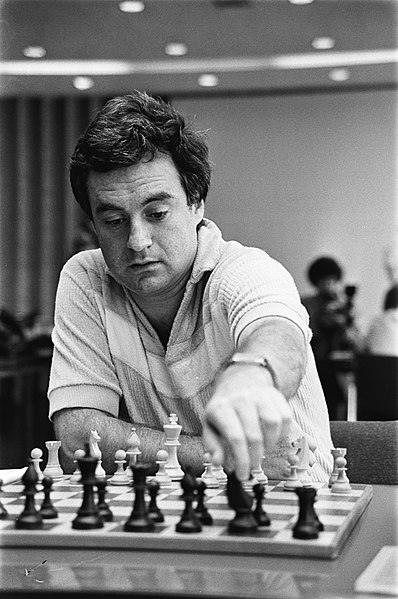
Genna Sosonko emigrated from the USSR to the Netherlands in 1972. For the past 20 years or so he’s made a career out of writing essays and books about chess in the Soviet Union, and interviewing many of the leading players from that period.
This is the position at the adjournment (remember them?) of the 23rd game of the 1951 World Championship match between Mikhail Botvinnik (White in this game) and David Bronstein, the subject of this memoir by Genna Sosonko. A position that would haunt Bronstein for the rest of his life. He was a point up with just two games to play but if the match was drawn Botvinnik would retain his title. Bronstein had been at least equal at various times during the game, but, in this complex ending, had erred a couple of moves earlier, and, if Botvinnik had sealed Bb1 (Bc2 also does the trick) he’d have had a winning advantage.
But when the envelope was opened the next day, 42. Bd6 appeared. The game continued 42… Nc6 43. Bb1, when Na7, planning b5, would have drawn, leaving Bronstein only requiring a draw with White in the 24th game to become the 7th World Champion. Instead, though, he played Kf6, and Botvinnik eventually won, although Stockfish suggests that Black might still have drawn.
I’d always assumed that Bronstein, as befits his play, was a witty and charming man, but Sosonko paints a very different picture. An annoying eccentric who would never stop talking about his obsessions, notably Botvinnik and the above game, but who frequently contradicted himself as to whether or not he really wanted to become World Champion, and as to how much pressure he was put under by the Soviet authorities, both in that match and later. A man with a never ending stream of ideas about chess, some brilliant, but others crazy. (Perhaps this is not an uncommon trait amongst chess players – I can think of several friends who are very similar.) A man who, as he aged, became sad and embittered, regretting and resenting his chess career and wishing he’d done something else with his life.
At times I thought Sosonko was turning into Bronstein himself, as he regaled me with more and more anecdotes from other players telling similar stories about Bronstein’s oddities, and more and more conversations with him in his final years, all saying very much the same thing. “Shut up, Genna! You’ve made your point. Can’t we look at some chess instead?”
No, it seems we can’t. You won’t find any chess at all in this book. Even when a game is discussed, as in the above example, we don’t get to see the moves. Yes, most readers can do what I did and look them up, but having to do that is both frustrating and unnecessary.
An air of sadness pervades much of the book. While I agree that it’s important to know something of the personalities behind the moves, Bronstein, like, for example, Alekhine and Fischer, is best remembered by his games.
And yet – there’s a lot of interest here. A lot of material, admittedly anecdotal, about chess in the Soviet Union, and, in particular, about Bronstein’s éminence grise Boris Vainshtein. Sosonko calls him the Prince of Darkness, and I was very much reminded of Dominic Cummings, himself a chess player in his youth, who plays a similar role in the life of another Boris. Descriptions of Bronstein’s chess philosophy often made me stop and think anew about the nature and purpose of chess, and about my own chess philosophy.
With a firmer editorial hand this could have been an excellent book. Cut back on the repetitive anecdotes and the descriptions of his final years. Add the positions and moves when a game is being discussed. Perhaps expand the section on Bronstein’s chess philosophy. Nevertheless, for anyone interested in post war chess Sosonko’s book is still an essential read.
I’ll close, if I may, with a couple of personal thoughts. Even though he studied geography, not psychology, Sosonko likes to psychoanalyze his subjects, tending towards theories based on nurture rather than nature. These days most of us take a different view. A child presenting with his oddities today would probably receive various diagnoses and labels. For better or for worse? You tell me.
Finally, here’s Sosonko explaining why Bronstein, at the end of his life, was popular with children.
“People rejected by the adult world are often children’s best friends. They are not quite normal to other adults, but are full of charm for children: fully-grown charming eccentrics who never become proper adults.” Guilty as charged.
Richard James, Twickenham 10th May 2020

Book Details :
- Softcover : 272 pages
- Publisher: Limited Liability Company Elk and Ruby Publishing House (10 Aug. 2017)
- Language: English
- ISBN-10: 5950043316
- ISBN-13: 978-5950043314
- Product Dimensions: 12.9 x 1.6 x 19.8 cm
Official web site of Elk and Ruby
